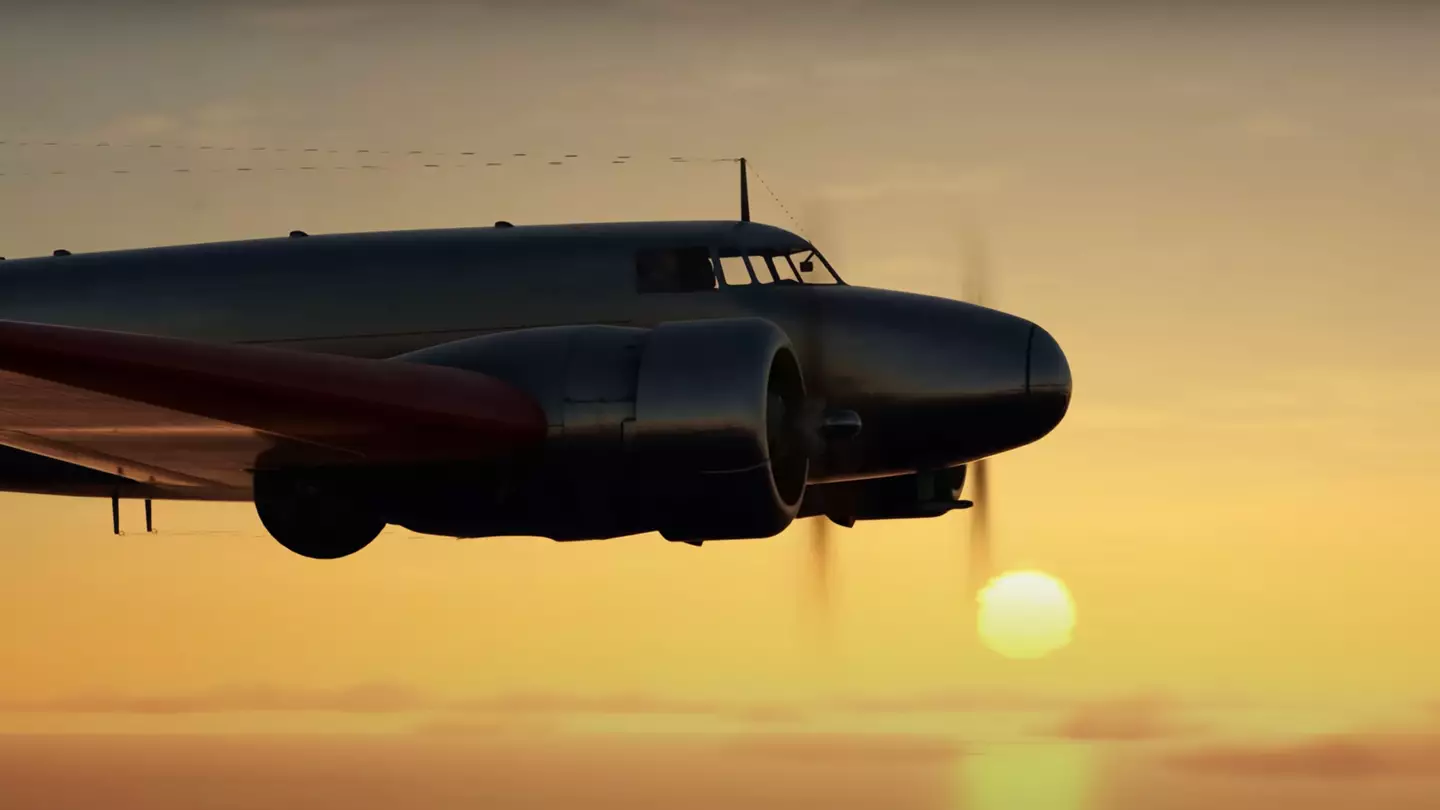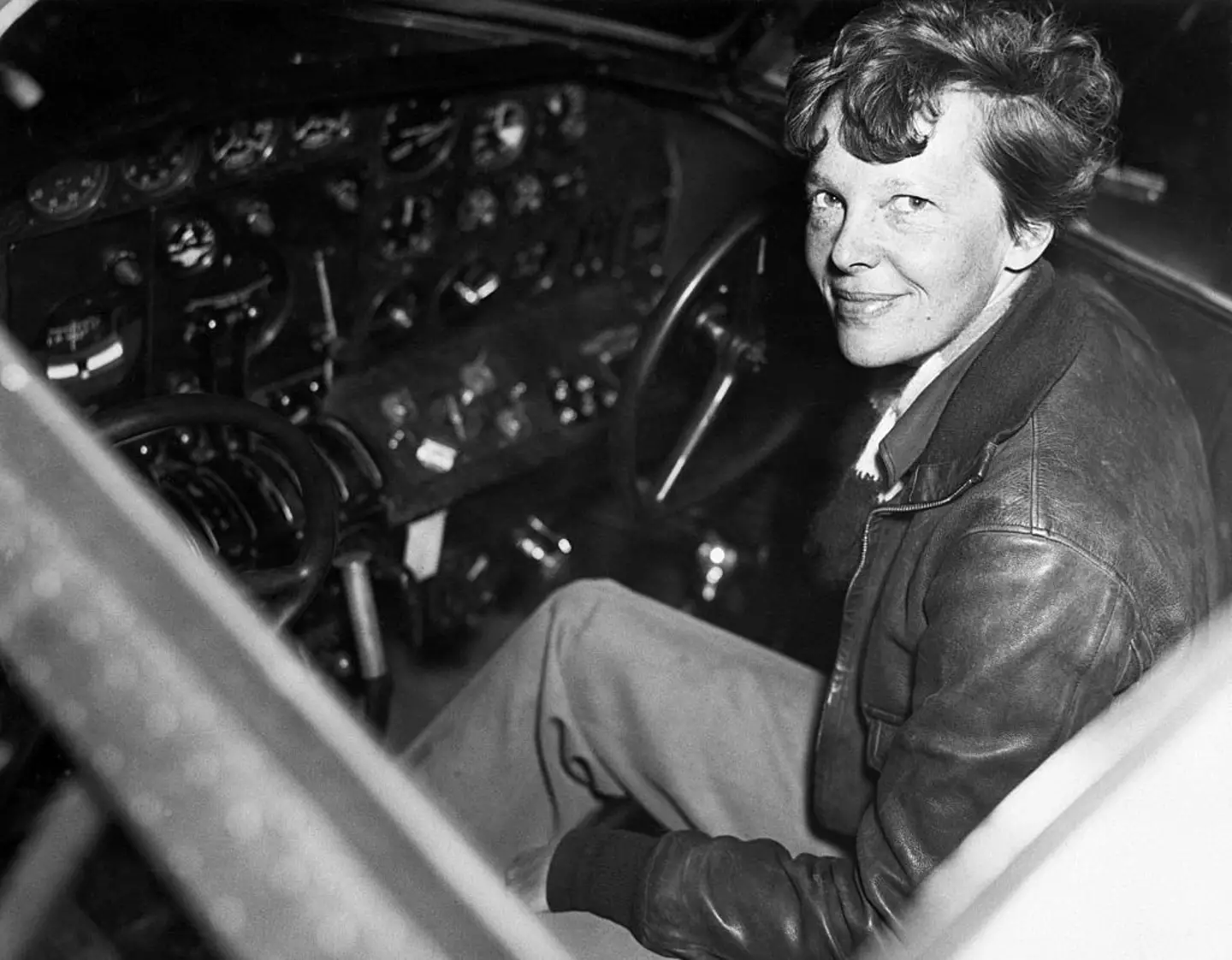
A simulation of Amelia Earhart's final plane journey has revealed the last communication she had with the outside world.
Back in 1937, Earhart was travelling across the globe with her navigator, Fred Noonan, when the pair disappeared.
It's a case that's mystified researchers and aviation experts ever since, with a number of different theories floating around over the pair's final moments.
To try and understand exactly what happened to Earhart and Noonan, science platform Veritasium shared a simulation of Earhart's flight on YouTube, the details around the mystery and what went wrong as they attempted to land at Howland Island.
Advert
To recap, at the end of June, the pair landed in Lae, New Guinea, and had just 7,000 miles (11,000 km) of their around-the-world journey left to go.
But, there was an issue. Knowing they would not have enough fuel to travel across the Pacific Ocean to Hawaii, Earhart planned a stop on Howland Island - a tiny, patch of land in the middle of the ocean where they could refuel.
However, on their way to the island, the pair encountered problems and before they could make it to Howland, they vanished.
There's no conclusive evidence over what happened, but many believe they ran out of fuel somewhere over the Pacific.
.jpg)
Advert
In a simulation of the flight's final moments, Derek Muller explained that to help navigate across the ocean, Earhart had commandeered three US navy and coastguard ships - the Ontario (situated halfway along the route), the Itasca (at Howland Island) and the Swan (midway between Howland and Hawaii).
The plan was that the Itasca would send out smoke signals as Earhart approached, in order to help her land.
However, a telegram Earhart had sent the Itasca asking them to transmit 10 minutes after each hour never made it to the ship in time.
They never sent the signals, which would likely have been unnerving for Earhart.
This was just the start of a string of communicative issues, however, which resulted in Earhart never making it to her destination.
At around 6.15am, the team onboard Itasca heard Earhart, and sent the following message: "Please take a bearing on 3105. Will whistle into the mic. We are about 200 miles out."
Advert
Muller explained that the team were confused when Earhart whistled back in response.
"The signal needed to be lower frequency... Her voice frequency would skip off the ionosphere and reflect off the ocean, scattering in all directions... the signal would be coming from everywhere," said Muller.
However, in the aircraft, Earhart could only hear static noise.
Around half an hour later, Earhart sent another message to the Itasca, asking them to take another bearing at 3105KHz and to report back in half an hour.
But the team were confused, likely because Earhart, the Itasca and Howland Island were all using different time zones.
Advert
Earhart had told the Itasca that she would be using Greenwich Civil Time (GCT) but this message was never received by the radio team.
It's believed she didn't say 'in half an hour' but 'on the half hour', which would only have been 15 minutes away for the pilot.

The men on Itasca responded: "Cannot take a bearing on 3105... Please send on 500, or do you wish to take a bearing on us?"
But Earhart couldn't take a bearing on 500KHz because she had previously removed a long trailing antenna that could transmit lower frequencies following a previous crash.
Advert
Earhart could have taken a bearing on the Itasca using the loop antenna on the front of the aircraft, but tragically they had sent her the wrong frequencies.
At 7.42, Muller explained that Earhart's voice was so loud on the radio that the men went to the deck to see if they could spot the plane.
"We must be on you, but we cannot see you," she said.
"Fuel is running low. Been unable to reach you by radio. We are flying at 1,000 feet."
Due to the Itasca's frequencies being too high, Earhart wasn't able to detect the radio waves.
At 8:43 am Earhart added: "We are on the line 157-337, flying north and south," which indicated they were flying towards Howland Island. Tragically, it was the last message the Itasca heard.
Muller believes Earhart ran out of fuel and crashed into the sea.
A two-week search ensued, costing around $4 million, which equates to around $100 million (£73 million) today.
Expert Chris Williamson - who hosts the Chasing Earhart podcast - was asked for his own personal opinion on what happened all those years ago.
Chris explained on Reddit: "I think it’s hard to ignore the Itasca logs and what she said that morning. Anyone who attempts to prove anything else, has to deal with that.
"I think it’s possible that the aircraft out at Buka is hers. Or at the least, a missing Electra. The kicker to that is, there’s only one known missing Electra in the world and that’s hers. Snavely has an aircraft and the site is screaming at us to go look.
"So while they continue deep ocean searches we’re gonna do that. The more we can cross off the table theory wise, the better.
"I think the evidence is strong that the aircraft lies somewhere near Howland, but until someone provides that concrete proof, the entire case is up in the air as far as I’m concerned."
Purdue University has recently confirmed they are launching a new investigation following satellite images taken in 2015, which appeared to show Earhart's missing plane on Nikumaroro.
A research team are heading out in November, with Steve Schultz, Purdue’s general counsel, telling NBC News: "We believe we owe it to Amelia and her legacy at Purdue to fulfil her wishes, if possible, to bring the Electra back to Purdue."
Topics: News, World News, Travel, History
